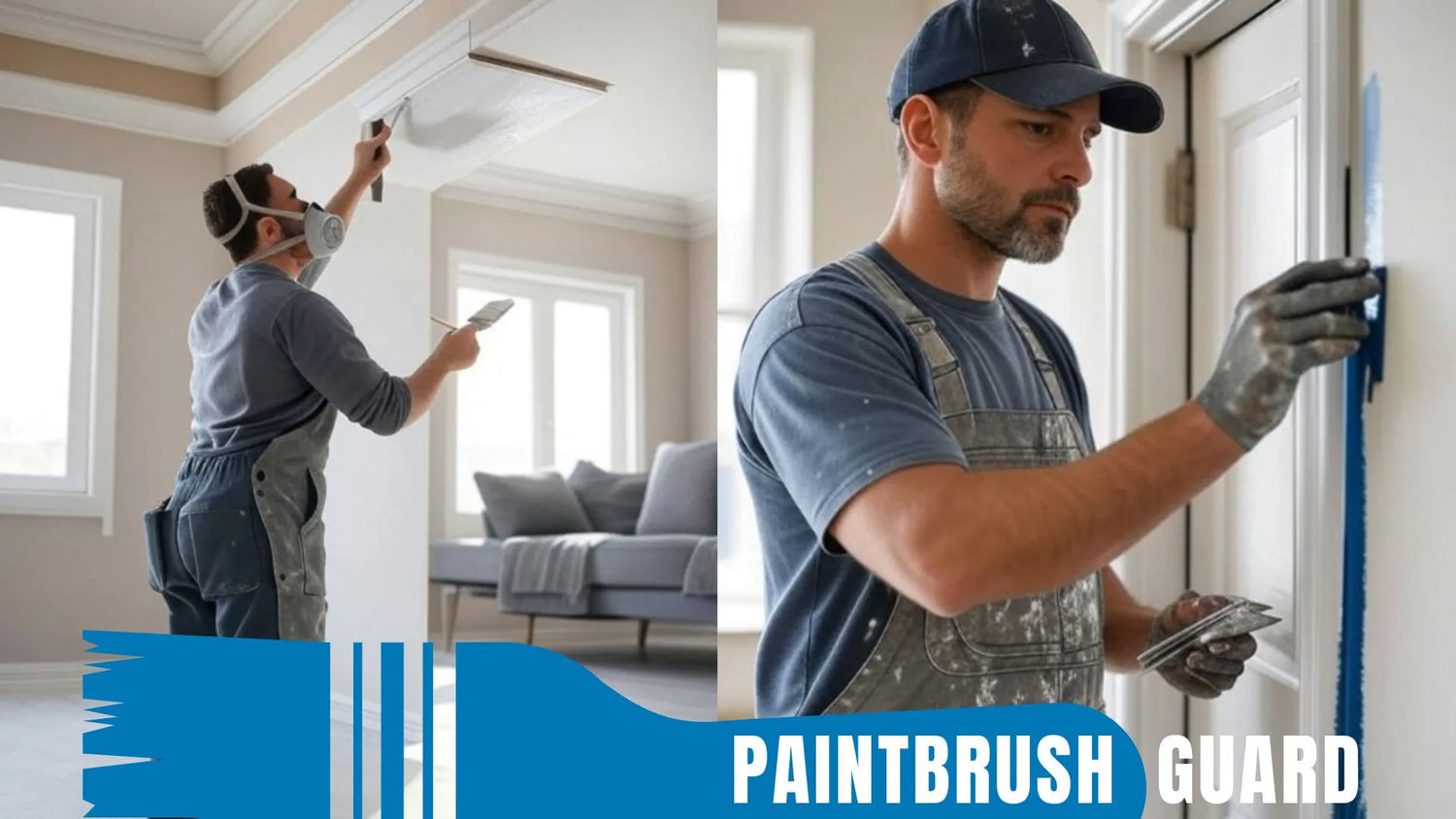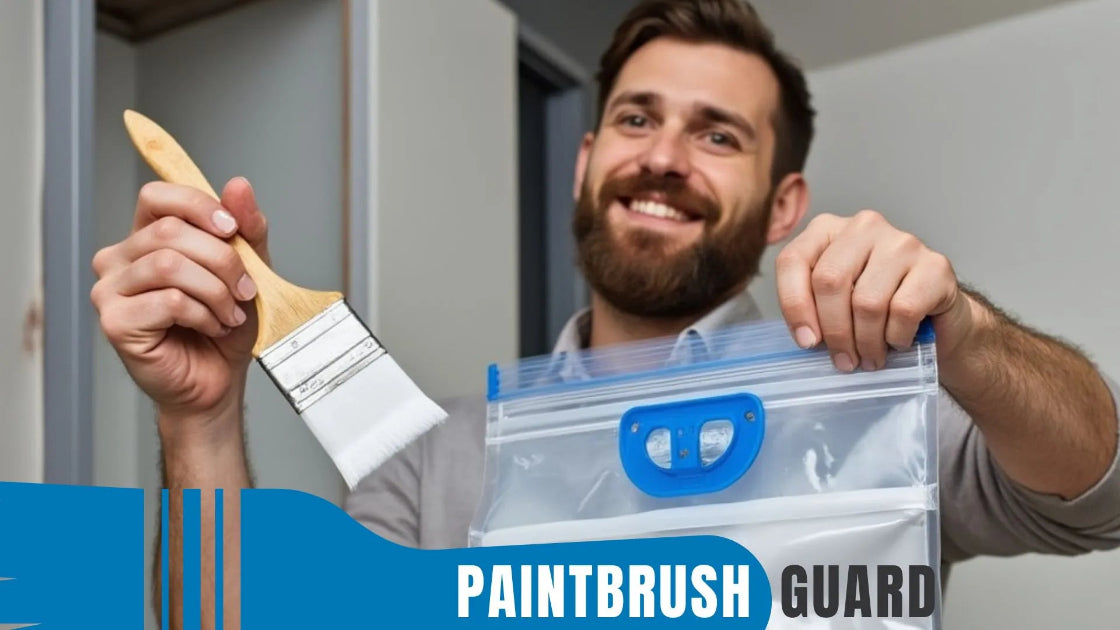
What Kind of Paint Do You Use on Exterior Brick?
|
Time to read 11 min
|
Time to read 11 min
For exterior brick, use high-quality masonry or elastomeric paint designed for porous surfaces. These paints ensure breathability, durability, and weather resistance. Avoid standard latex paints to prevent moisture issues.
Consider brick condition, climate, and preparation for best results when choosing paint for exterior brick surfaces.
Read our exterior brick painting guide: This in depth guide covers everything from inspection, priming and painting house brick for a professional finnish.
Selecting the appropriate paint for exterior brick is crucial for a lasting, attractive finish. The wrong paint can trap moisture, damage brick, or peel quickly, leading to costly repairs. Here are key reasons to focus on paint type when painting brick exteriors.
These benefits highlight why choosing the best paint for exterior brick is essential for a successful project.
This article explores is it better to spray or roll exterior paint on brick, comparing the two methods to guide your decision.
When deciding which paint to use for exterior brick, focus on options designed for masonry surfaces. Below are the top choices recommended for durability and performance.
Masonry paint is specifically formulated for brick, concrete, and stucco. It’s breathable, allowing moisture to escape while providing a protective coating. Available in various finishes (e.g., matte, satin), it resists fading and peeling, making it ideal for brick exteriors.
Elastomeric paint is highly flexible and durable, perfect for brick in extreme climates. It expands and contracts with temperature changes, preventing cracks. Its thick consistency fills small gaps, but it requires careful application to avoid trapping moisture.
Some acrylic latex paints are designed for masonry and offer good breathability. Choose high-quality, exterior-grade options labeled for brick to ensure adhesion and weather resistance. Avoid standard latex paints, which can trap moisture and cause damage.
Mineral-based paints, like silicate or lime-based options, bond chemically with brick, creating a breathable, long-lasting finish. They’re eco-friendly and resist mold but may have limited color options and require professional application for best results.
This article explores what color brick makes a house look bigger, offering insights into brick paint options, color psychology, and practical tips to achieve a larger look.
Paint Type |
Pros |
Cons |
Masonry Paint |
Breathable, durable, wide color range |
May need primer for best adhesion |
Elastomeric Paint |
Flexible, fills gaps, weather-resistant |
Thick, may trap moisture if misapplied |
Acrylic Latex (Breathable) |
Easy to apply, good adhesion |
Limited breathability in some brands |
Mineral-Based Paint |
Eco-friendly, long-lasting, breathable |
Limited colors, higher cost |
This table helps clarify which paint suits your brick painting project.
To select and apply the best paint for exterior brick, ensuring a durable, professional finish that lasts for years, follow these detailed steps to evaluate factors and execute the painting process effectively:
Begin by assessing the brick’s condition for cracks, moisture, or efflorescence (white, powdery deposits caused by mineral salts). Use a flashlight to check for hidden damage in shaded areas.
Clean the surface using a pressure washer on a low setting (1500–2000 PSI) to remove dirt, mildew, and efflorescence without harming the brick, or scrub with a stiff nylon brush and a mild detergent solution (e.g., 1 part bleach to 3 parts water for mildew). Rinse thoroughly with clean water to eliminate all residue.
Allow the brick to dry completely for 24–48 hours, using a moisture meter to confirm the moisture content is below 12%. This ensures no moisture is trapped under the paint, preventing bubbling, mold, or brick deterioration.
This article explores how long will painted brick last, the key influences on its durability, and practical steps to keep it in top shape.
Carefully examine the brick for cracks, loose mortar, or damaged areas. Use a chisel or wire brush to remove crumbling mortar, and repoint with a fresh mortar mix (available at hardware stores), matching the existing mortar’s color and texture for a seamless look.
For cracks in bricks, apply a masonry sealant or exterior-grade caulk using a caulking gun, smoothing with a putty knife to create a flush surface. Replace severely damaged bricks by chiseling them out and installing new ones, securing with mortar.
Sand rough areas with a masonry sanding block to ensure a smooth surface. Wipe down with a damp cloth to remove dust, preparing the brick for priming and painting.
Choose a high-quality, masonry-specific primer formulated for brick to seal its porous surface and enhance paint adhesion, preventing uneven absorption and ensuring a uniform finish.
Opt for an alkali-resistant primer to withstand brick’s high pH levels. Use a synthetic brush for edges, corners, and mortar joints, and a heavy-nap roller (¾-inch or thicker) for larger areas to apply one even coat, covering all surfaces thoroughly.
Check the product label for drying time, typically 4–24 hours, and ensure the surface is dry and non-tacky before proceeding. This step creates a strong foundation, reducing the risk of peeling or flaking over time.
Learn more about exterior brick paint types: The wrong paint can trap moisture, damage brick, or peel quickly, leading to costly repairs. Here are key reasons to focus on paint type when painting brick exteriors.
Choose an exterior-grade, breathable paint, such as masonry, elastomeric, or mineral-based paint, specifically designed for brick to allow moisture to escape and prevent mold, mildew, or brick damage.
Avoid standard latex or oil-based paints, which trap moisture and cause bubbling. Masonry paint provides a smooth, durable finish, while elastomeric paint is thicker, filling minor cracks and offering flexibility in extreme weather. Mineral-based paints, like silicate or lime-based options, bond chemically with brick for a long-lasting result but may have fewer color choices.
Select a paint with UV resistance and mildew inhibitors, and confirm it’s labeled for exterior brick. Pick a color that boosts curb appeal (e.g., neutral tones like white or gray), ensuring it aligns with local trends and homeowners’ association rules, if applicable.
Stir the paint thoroughly to ensure consistency, and apply two thin, even coats using a heavy-nap roller for large areas and a synthetic brush for detailed sections like mortar joints or corners.
Work in small sections (e.g., 3x3 feet) to maintain a wet edge, avoiding lap marks or uneven drying. Paint in mild weather conditions—avoid direct sunlight, high humidity, or temperatures below 50°F (10°C) or above 90°F (32°C), as these can impair adhesion and drying.
Allow the first coat to dry for 4–6 hours (or per label instructions), then lightly sand with 220-grit sandpaper to remove any imperfections, wiping clean with a damp cloth. Apply the second coat to achieve a professional, durable finish with complete coverage.
Brick and whitewashing: This article explores is whitewashing brick out of style, examining current trends, aesthetic shifts, and practical considerations with brick paint.
Apply a breathable, exterior-grade masonry sealer to protect the painted brick from moisture, UV rays, and environmental wear, extending the paint’s lifespan. Avoid non-porous sealants that trap moisture, as they can damage brick. Use a sprayer or brush to apply a thin, even coat, following the brick’s texture to prevent streaks or pooling.
Apply in mild weather (50–85°F, low humidity) for optimal curing, and allow 24 hours of drying time, or as specified on the label, before exposing the surface to rain or heavy use. This step adds a critical barrier, especially in harsh climates, ensuring long-term durability.
Tailor your paint and sealer choices to your region’s weather to maximize performance. In humid or rainy areas, prioritize breathable paints and sealers with mildew inhibitors to prevent moisture buildup and mold growth.
In dry, sunny regions, select paints with enhanced UV protection to resist fading and cracking. For coastal areas, consider products resistant to salt corrosion. Check weather forecasts to avoid painting during wet, windy, or extreme conditions, which can compromise the finish.
Research local trends by observing nearby homes or searching “painted brick homes near me” to choose colors that enhance curb appeal and marketability. If in a homeowners’ association, verify that painting brick is permitted and complies with community standards or color restrictions.
These steps ensure a durable, attractive finish that maximizes paint longevity on exterior brick, delivering a professional result that withstands the elements.
Learn more about brick and whitewashing: This article explores how long does white wash brick last, delving into the influences on durability, maintenance needs, and practical advice for brick painting.
Choosing the wrong paint or skipping preparation can lead to issues. Avoid these pitfalls:
Avoiding these mistakes helps ensure the right paint performs well on exterior brick.
Selecting the right paint for exterior brick is key to achieving a durable, attractive finish. Masonry, elastomeric, or mineral-based paints offer breathability and weather resistance, while proper preparation prevents issues like moisture damage.
This article has explored top paint types, considerations, and steps, helping you make an informed choice for your brick painting project.
The best paints for exterior brick are masonry paint (breathable, durable, wide color range), elastomeric paint (flexible, crack-filling, weather-resistant), acrylic latex paint (breathable, exterior-grade for adhesion), and mineral-based paint (eco-friendly, bonds chemically, long-lasting). These ensure durability and prevent moisture damage compared to standard latex paints.
Choosing the right paint ensures durability against harsh weather, UV rays, and temperature changes, allows breathability to prevent mold and brick damage, enhances curb appeal with even coverage, and protects the brick’s lifespan. The wrong paint can trap moisture, leading to peeling or costly repairs.
Inspect and clean brick with a pressure washer or brush, dry for 24–48 hours, repair cracks with mortar or caulk, and apply a masonry-specific primer. Use two thin coats of breathable paint with a heavy-nap roller and brush, drying 4–6 hours between coats, and seal with a breathable masonry finish for protection.
Avoid using non-breathable standard latex or oil-based paints, which trap moisture; skipping primer, leading to poor adhesion; painting in high humidity or extreme temperatures, affecting drying; and neglecting surface prep, causing uneven coverage and reduced durability.
In humid or rainy climates, use breathable paints with mildew inhibitors; in sunny areas, choose UV-resistant paints; in coastal regions, select salt-resistant formulas. Check weather to avoid painting in wet or extreme conditions and verify homeowners’ association rules for color or painting restrictions to ensure compliance and durability.
Is painting exterior brick a good idea?
Discover if painting exterior brick is a good idea. Explore pros like enhanced curb appeal, cons like maintenance, and key tips for a lasting finish.
What kind of paint do you use on exterior brick?
Learn what kind of paint to use on exterior brick. Discover top paints like masonry and elastomeric, their benefits, and tips for a durable finish.
Do I need to prime exterior brick before painting?
Learn if you need to prime before exterior brick painting. Discover why priming enhances durability, when to skip it and best practices for a lasting finish.
How long will painted brick last?
Discover how long painted brick lasts. Learn about brick paint durability, factors and tips to extend its life and expectations for upkeep and repainting.
Is it better to paint or stain exterior brick?
Is it better to paint or stain exterior brick? Explore brick paint vs. stain pros, cons, and durability in this brick paint and stain to guide your decision.
Is it better to spray or roll exterior paint on brick?
Learn brick paint application pros, cons, and tips in this brick paint guide for beginner painters.
Is it better to limewash or paint brick?
This article explores is it better to limewash or paint brick, comparing the two methods and durability to help you choose the best option.
Is whitewashing brick out of style?
This article explores is whitewashing brick out of style, examining current trends, aesthetic shifts, and practical considerations with brick paint.
How long does white wash brick last?
This article explores how long does white wash brick last, delving into the influences on durability, maintenance needs, and practical advice for brick painting
What is the best color to paint brick?
This article explores what is the best color to paint brick, offering options and advice to help you achieve a stunning look with brick painting.
What is the downside of painting brick?
This article explores what is the downside of painting brick, shedding light on the challenges of brick painting to help you make an informed choice.
What color brick makes a house look bigger?
Explore brick paint and color brick paint options to make your house look bigger, offering insights into brick paint color psychology and practical tips.

Learn about eco-friendly painting, tips and tutorials on house interior and exterior surfaces, so you can get started with your project without any surprices during or after your painting.

Learn how interior house paint colors influence mood with expert tips on room preference so you can pick the best colors for a harmonious home environment.
We focus on the most popular shades for each interior colors, so you don't miss no matter what color you pick.

Learn how this innovative tool allows you to store paintbrushes without the need for immediate cleaning, offering significant advantages in time savings, water conservation, reduced chemical pollution, and lower costs for supplies.




